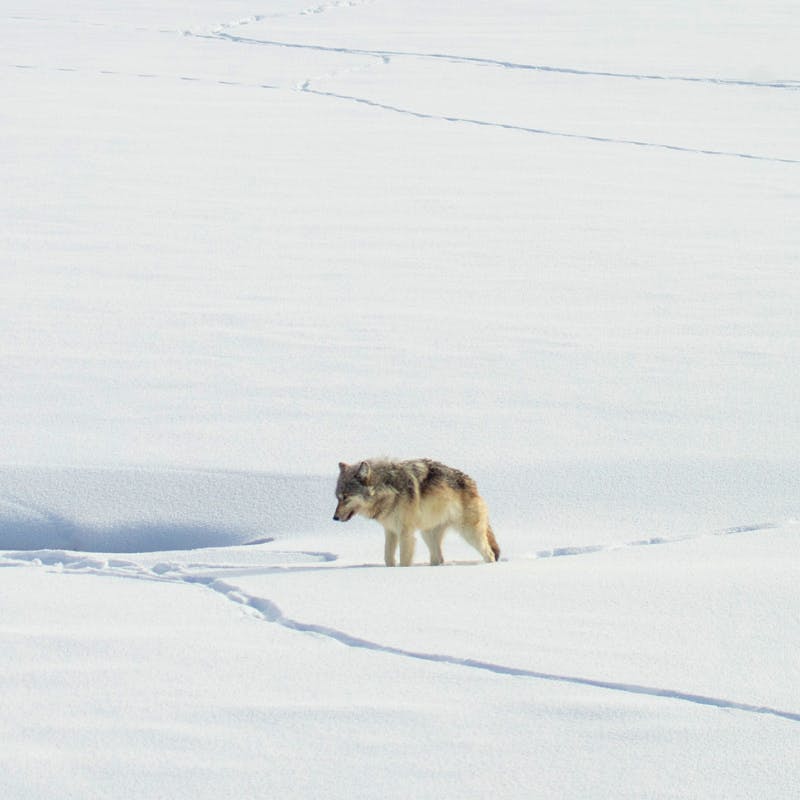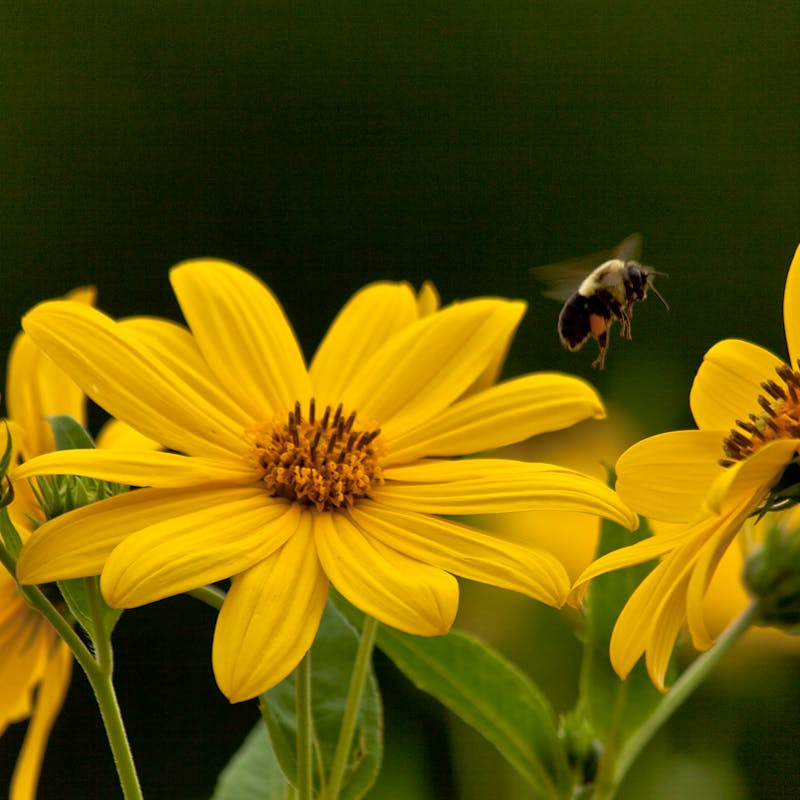Suzanne Stone, Northern Rockies Representative
The restoration of gray wolves is one of the most ecologically successful, politically controversial and socially polarized wildlife recovery efforts ever undertaken. More than 1,600 wolves have been killed in the U.S. northern Rockies in attempts to address losses of nearly 5,000 livestock and perceived threats to hunting opportunities over the last quarter century. Tragically, most of these losses could have been avoided if agencies and livestock managers were willing to try a different way.

The fladry relay helped teach the worshop participants how to set up and take down fladry lines quickly.
Using a model called the Wood River Wolf Project, our team is effectively demonstrating the use of nonlethal deterrents that allow livestock and wolves to coexist. Last year, ranchers grazed 27,305 sheep in our 1,200-square-mile project area from July 1 – Oct. 15. During that time, we lost only four sheep to wolves in one incident — a record not only in our state, but in our region. We also documented three wolf packs in our project area using remote motion-sensitive cameras, and no wolves were killed in the project area as a result of livestock depredation conflicts.
Given the success of our model, we decided it was time to share our techniques and strategies. In June, Defenders of Wildlife hosted the Wood River Wolf Project training workshop and field demonstration in Blaine County, Idaho. The workshop covered a wide range of nonlethal tools (e.g. fladry, lighting, noise, livestock guarding dogs) and techniques (e.g. carcass removal, increased human presence, grazing route rotations) successfully used to deter wolves and other predators from killing livestock that have been used during the first five years of this model project. The classroom activities were followed by a fladry relay where the participants learned how to properly install fladry lines and parameters (see video here). The second day, led by our project field manager Patrick Graham, we met with herders out in the field as they were watching bands of sheep graze on the hillsides. They spoke about the challenges of herding thousands of sheep in rugged mountain country with abundant wild predators. They also talked about the importance of the partnership with the Wood River Wolf Project team and how much they appreciated their help in protecting the sheep using the nonlethal methods to avoid losses to wolves.

The workshop included presentations by our project leaders, wildlife biologists and more.
Workshop leaders included researchers and wildlife managers from the National Wildlife Research Center, Oregon Department of Fish and Wildlife, project mentor Carter Niemeyer, Faulkner and Lava Lake Livestock sheep managers, and Defenders’ field contractors and staff from Idaho and Montana. Participants came from all over the country and the world! More than 50 people attended the workshop including state and tribal representatives from Washington State, Oregon, Utah, Montana, Florida and California. Our online participants included wildlife scientists and managers from all over the world including Africa, Australia, Brazil, Canada, Costa Rica, Europe, Israel, and Iran.
Sadly, while our field team is working with cooperating ranchers in the west side of the valley, a rancher who has recently adopted a hands off range lambing approach is losing sheep to wolves and other predators on the east side. These losses would be preventable if he chose to use safer lambing methods where the sheep would be better protected during their vulnerable lambing time. In reaction to the sheep losses to predators, the federal Wildlife Services agent has killed multiple wolves, including three young eight-week-old wolf pups. It now looks like he is exterminating the whole pack, which is the second pack to fall victim to this tragic situation. We have offered many times to help this rancher switch to a better method for lambing and will continue to offer him help in the future with the hope that he will eventually tire of the needless loss of his sheep and the increasing public animosity toward him. It is just sad that so many animals are needlessly dying now and yet, it is indicative of our country’s archaic predator control traditions.

Range riders are an important part of the Wood River Wolf project, spending most of their time in the field with the livestock.
It is my greatest career goal in my lifetime to help improve the way that our nation and others manage wildlife. Humans are taking over more of the planet leaving less and less places for nature. Given the resulting loss of species across the globe, and what we know now about the important role of predators in sustaining a healthy natural environment, we cannot afford to kill wild animals just because they are considered a nuisance. It’s time to transform the archaic mindsets for a new paradigm of smarter, more effective and more humane predator management. And given the overwhelming response to our workshop, and similar efforts of others across the globe, it is clear that our shared vision and voices are growing stronger. The actions we all take now will determine the fate of these species that require human tolerance to survive.
“We need another and a wiser and perhaps a more mystical concept of animals… We patronize them for their incompleteness, for their tragic fate of having taken form so far below ourselves. And therein we err, and greatly err. For the animal shall not be measured by man. In a world older and more complete than ours they move finished and complete, gifted with extensions of the senses we have lost or never attained, living by voices we shall never hear. They are not brethren, they are not underlings; they are other nations, caught with ourselves in the net of life and time, fellow prisoners of the splendor and travail of the earth.”
― Henry Beston
Want to see some video from our workshop? Check out the links below:





Follow Defenders of Wildlife
facebook bluesky twitter instagram youtube tiktok threads linkedin